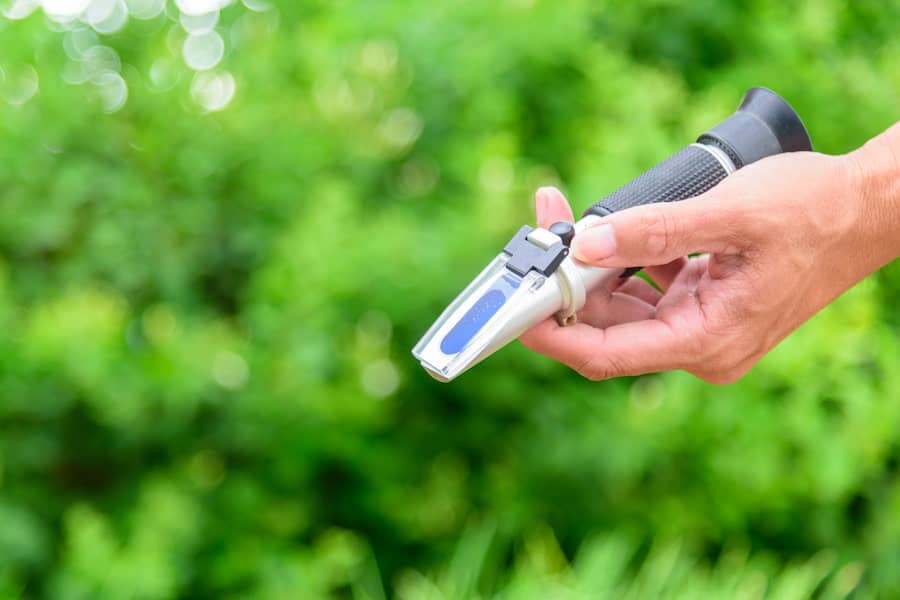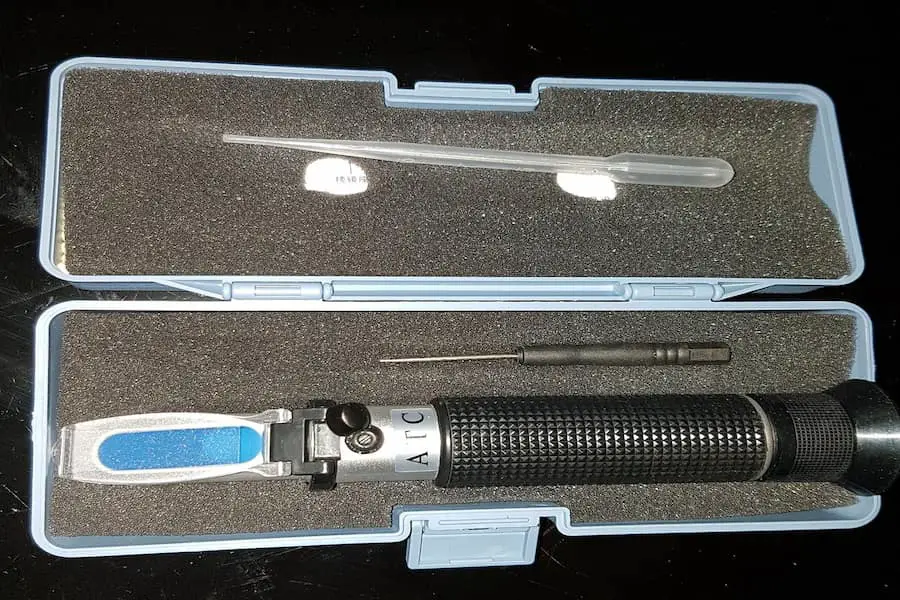If you buy something through a link in our posts, we may get a small share of the sale.
Refractometer vs. hydrometer, what features make these two tools important in the brewing industry? Brewers and winemakers use these measuring instruments to determine the density of their wort or must and calculate the alcohol content. So, how do these devices work, and what is the difference between them?
Contents
Refractometer vs Hydrometer Overview
The brewing industry is adopting the technology, and no brewer wants to be left behind. The hydrometer and the refractometer are important in measuring the wort’s density or must. Each has its own advantages and disadvantages that make it more suitable for different tasks.

Knowing how each work is the key to understanding when to use them and getting the most accurate reading. For instance, using a refractometer to check the final gravity of your beer can give you an incorrect reading. The same is true when using a hydrometer to check the starting gravity of wort or must.
That is why it is important to know when to use each tool and understand the difference between the two to get the most accurate reading possible. Also, keep in mind that either of these tools can measure the density of a liquid, not just wort or must.
Refractometer
A refractometer is an optical measurement device that uses the bending of light to measure a liquid’s refraction index. The index of refraction is a measure of how much a light beam bends when passing from one medium to another. The amount of bending is affected by the difference in the density of the two substances.
In the beer industry, a refractometer measures wort’s density or must. The device works by shining a light beam through the wort to the eyepiece. The amount of bending of the light beam is then used to calculate the density of the liquid.
The amount of sugar and extract in the wort must affect the density and, therefore, the alcohol content. The refractometer has both Brix and Plato scales. These two units of measurement are used to determine the amount of extract in wort or must. The Brix scale measures the percentage of sucrose by weight in the liquid. The Plato scale is a measure of the specific gravity of the liquid.
Advantages of Refractometer
- The two scales make the refractometer a versatile tool that can be used in both the brewing and wine industry
- It is a quick and easy way to measure the density of a liquid
- The device is small and portable, making it easy to use and store and ideal for taking with you when traveling
- It can be used to measure the density of a variety of liquids, not just wort or must
- It is not affected by the changes in temperature
Disadvantages of Refractometer
- A small sample used may not be representative of the entire batch
- It can only be used to measure the density of clear liquids; turbid liquids will give an inaccurate reading
- It can be damaged if used to measure hot liquids

Hydrometer
A hydrometer is an instrument that is used to measure the specific gravity (SG) or density of liquids. It consists of a glass tube with a weight at the bottom and a scale graduated in specific gravity units (SG) or density. It uses the principle of buoyancy to measure the density of a liquid.
The hydrometer will float depending on the density of the liquid. The denser the liquid, the more it will sink in the liquid. The less dense the liquid, the more it will float. The scale on the hydrometer is calibrated so that you can read the specific gravity or density of the liquid.
In the brewing, a hydrometer is used to determine the wort’s density before fermentation and the density of the beer after fermentation. The specific gravity of the wort is a good indicator of the number of fermentable sugars in the wort. To get the specific gravity of the beer, you subtract the final specific gravity from the original specific gravity. This will give you the alcohol by volume (ABV).
ABV% = Original Gravity (OG)-Final Gravity (FG)
Advantages of a Hydrometer
- It can be used to measure the density of a wide range of liquids
- It is easy to use as it just relies on the principle of buoyancy
- It is readily available and relatively cheap compared to
Disadvantages
- It is not very accurate as it is affected by temperature changes
- It can be broken easily; hence not very durable
Comparison of a Hydrometer and a Refractometer
As mentioned earlier, these two instruments have similarities and differences worth noting. Let’s have a look at some of them.
Similarities
- Both instruments are used to measure the specific gravity or density of liquids
- They both have a glass tube with a weight at the bottom and a scale
- Both have the same principle of operation; they use the principle of buoyancy
- Both can be used to measure the density of a wide range of liquids not only water
- They can be used in different industries such as the brewing industry and food industry
Differences
- A refractometer uses a lesser sample size as compared to a hydrometer which uses a larger sample
- A refractometer is rarely affected by the temperature as compared to a hydrometer which is affected by changes in temperature
- When using a refractometer, you do not need to open the fermenter much since you just need a drop of liquid as compared to a hydrometer, where you need to take a sample of at least 60ml
- A hydrometer requires adjustment for different densities of liquids as compared to a refractometer which does not require any adjustment

The Major Distinguishing Factor
The major difference between these two instruments is that a refractometer uses the principle of refraction while a hydrometer uses the principle of buoyancy. This means that a refractometer is more accurate than a hydrometer. A refractometer is also less affected by changes in temperature.
Another distinguishing factor is that a refractometer uses smaller sample sizes as compared to a hydrometer. This means that it is easier and less messy to use a refractometer.
When to Use a Refractometer
The best time to use a refractometer is when you need to take accurate readings and when temperature changes would affect the readings. Remember that a refractometer is not affected by changes in temperature.
When to Use a Hydrometer
A hydrometer can be used when you want to measure a large sample size. This is because a hydrometer can take up to 60ml of liquid.
A hydrometer can also be used when you are measuring the density of a liquid that is not very dense. This is because a hydrometer is less affected by changes in density as compared to a refractometer.
Which Is Better: A Refractometer or a Hydrometer?
In general, a refractometer is better than a hydrometer. This is because a refractometer is more accurate and less affected by changes in temperature. It is also easier to use as it uses smaller sample sizes.
However, there are some situations where a hydrometer is better than a refractometer. These situations include when you need to measure a large sample size or measure the density of a liquid that is not very dense.
Conclusion
Getting the best results from your homebrewed beer or wine comes down to understanding and using the proper tools for taking specific measurements. Ensure you understand when to use either a refractometer or a hydrometer, as using the wrong tool for the job can lead to subpar results.

